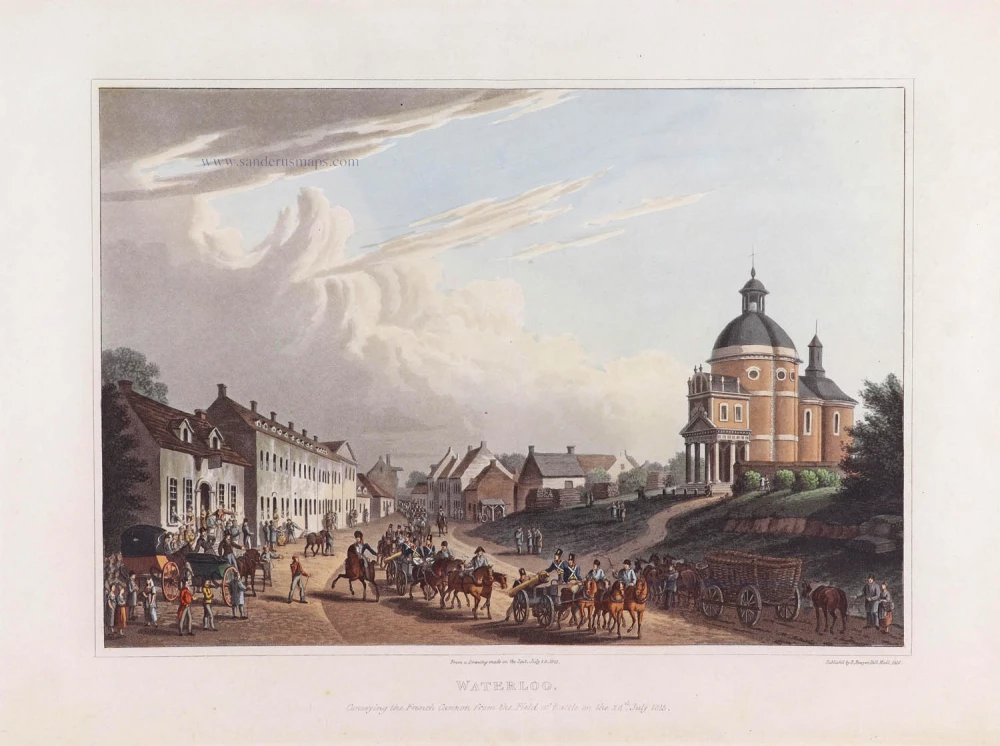Waterloo by R. Bowyer. 1816
Aquatint is an intaglio printmaking technique, an etching variant that produces tone areas rather than lines. For this reason, it has mostly been used in conjunction with etching to give both lines and shaded tones. It has also been used historically to print in colour, by printing with multiple plates in different colours and by making monochrome prints that were hand-coloured with watercolour.
It has been in regular use since the later 18th century and was most widely used between about 1770 and 1830 when it was used both for artistic prints and decorative ones. After about 1830, it lost ground to lithography and other techniques. There have been periodic revivals among artists since then. An aquatint plate wears out relatively quickly and is less easily reworked than other intaglio plates. (Wikipedia)
back
Waterloo.
€450
($490.5 / £378)
add to cart
Buy now
questions?
PRINT
Item Number: 29846 Authenticity Guarantee
Category: Antique maps > Europe > Belgium - Cities
Old, antique view of Waterloo by R. Bowyer.
Title: Waterloo.
Conveying the French Cannon from the Field of Battle on the 24th July 1815.
From a Drawing made on the Spot, July 24, 1815.
Published by R. Bowyer, Pall Mall, 1816.
Date: 1816.
Date on map: 1816.
Aquatint, printed on paper.
Image size: 220 x 320mm (8.66 x 12.6 inches).
Sheet size: 345 x 485mm (13.58 x 19.09 inches).
Verso: Blank.
Condition: Excellent.
Condition Rating: A+.
Aquatint is an intaglio printmaking technique, an etching variant that produces tone areas rather than lines. For this reason, it has mostly been used in conjunction with etching to give both lines and shaded tones. It has also been used historically to print in colour, by printing with multiple plates in different colours and by making monochrome prints that were hand-coloured with watercolour.
It has been in regular use since the later 18th century and was most widely used between about 1770 and 1830 when it was used both for artistic prints and decorative ones. After about 1830, it lost ground to lithography and other techniques. There have been periodic revivals among artists since then. An aquatint plate wears out relatively quickly and is less easily reworked than other intaglio plates. (Wikipedia)

